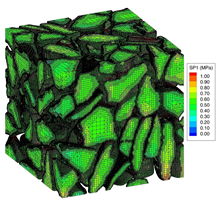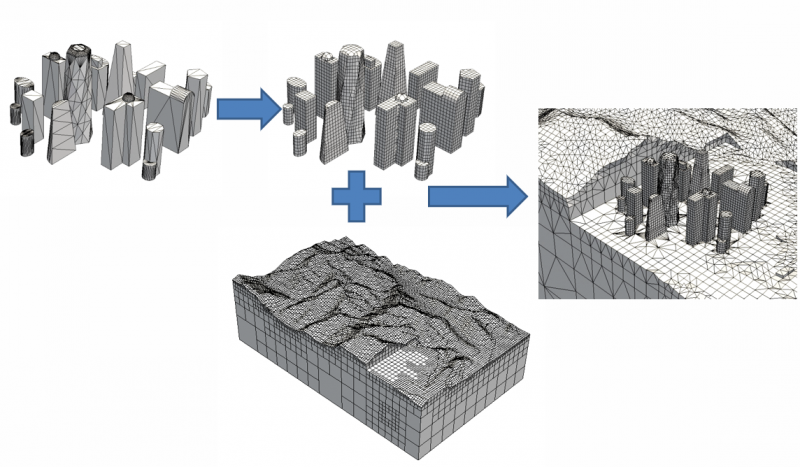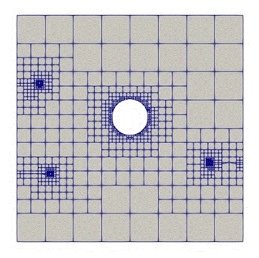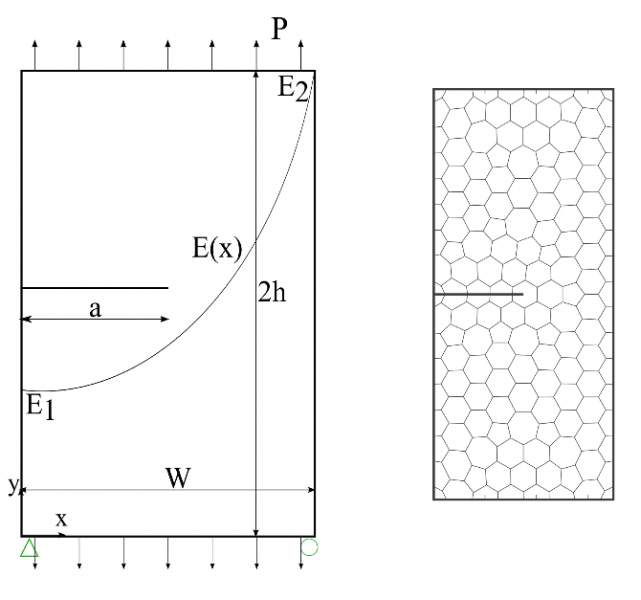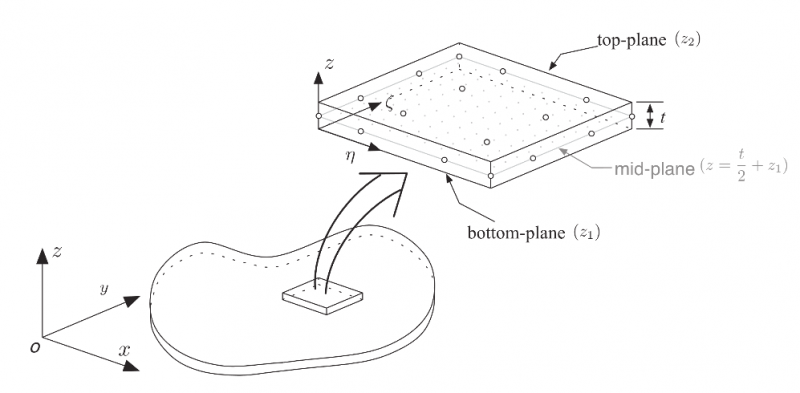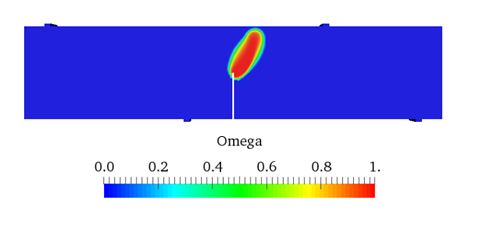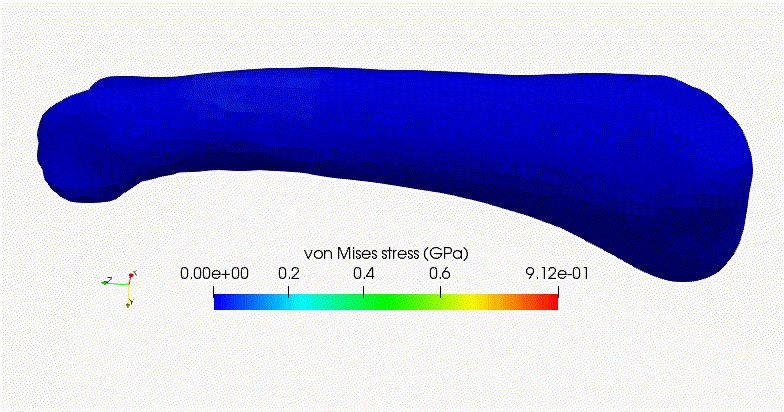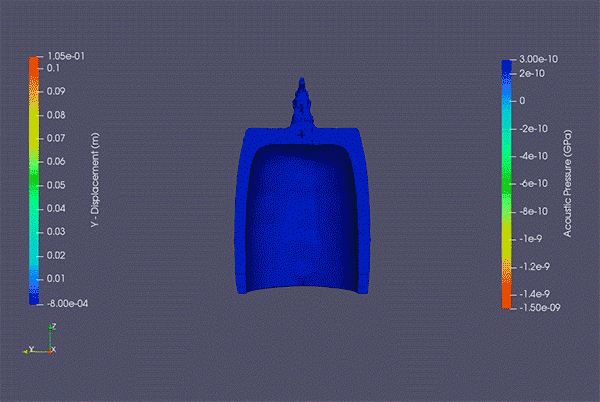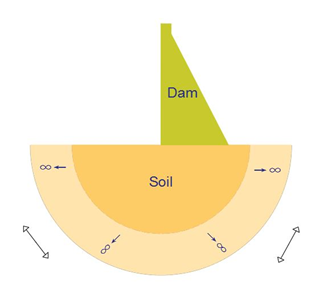Scaled boundary finite element method
|
About SBFEMThe SBFEM is a semi-analytical fundamental-solution-less boundary-element method based solely on finite elements [Wolf & Song 2000]. It not only combines many advantages of the finite-element method and the boundary-element method but also exhibits additional advantages. Much like the finite element method (FEM), the problem domain can be divided into multiple scaled boundary finite elements. Only the boundary of each scaled boundary finite element needs to be discretised, hence reducing the dimension of the problem by one.
|
About the BookThe Scaled Boundary Finite Element Method: Introduction to Theory and Implementation covers the static and dynamic stress analysis of solids in two and three dimensions. The relevant concepts, theory and modelling issues of the scaled boundary finite element method are discussed and the unique features of the method are highlighted. The applications in computational fracture mechanics are detailed with numerical examples. A unified mesh generation procedure based on quadtree/octree algorithm is described. It also presents examples of fully automatic stress analysis of geometric models in NURBS, STL and digital images.
The Scaled Boundary Finite Element Method: Introduction to Theory and Implementation is an ideal book for researchers, software developers, numerical analysts, and postgraduate students in many fields of engineering and science. |
|
|
|
|
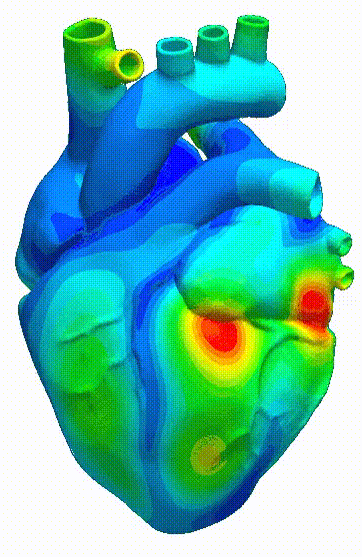 Stereolithography (STL)- based analysisStereolithography (STL) file format has been used widely in 3D printing. An automatic meshing algorithm for STL files is developed based on octree structure. Analysis of new designs drawn with CAD-based software can be performed with minimal effort. |
|
|
A novel coupling method for non-matching meshes is developed using arbitrary polyhedron elements. On the interface of the non-matching meshes, a surface mesh of polygon elements is constructed by merging the non-matching meshes. A shifting procedure is designed to prevent distortion. The solid elements connected to the interface are modified by replacing their faces on the interface with the new polygon elements, leading to matching discretization on the interface. |
|
|
SBFEM excels in modelling fracture problems owing to its ability to represent singular solutions in the radial directions around the crack tip accurately. Fracture parameters such as stress intensity factors and T-stress can be extracted directly. Crack propagation modelling in various materials including piezoelectric plates can be performed with ease. |
|
|
Scaled boundary finite element shape functions for any star-convex polygonal shapes are developed. Singular stress fields can be represented accurately in the radial direction. Heterogenous material response in functionally-graded material can be represented analytically based on the radial coordinates. |
|
|
3D-consistent technique to analyse piezoelectric plates is developed based on scaled boundary finite element method. The in-plane problem geometry is meshed with 2D elements while the thickness direction is represented by matrix exponential function. |
|
| A node-to-node (NTN) scheme for modelling contact problems within a scaled boundary finite element method (SBFEM) framework is developed. Nonmatching meshes can be simply converted into matching ones by appropriate node insertion, thereby allowing the use of the favourable NTN contact scheme. The general frictional contact is explicitly formulated as a mixed complementarity problem (MCP) with non-penetration and stick-slide exactly satisfied |
|
|
Nonlocal damage model can be performed using scaled boundary finite element method both in 2D and 3D. The automatic octree mesh generation is employed to refine the mesh at the localised process zone (DPZ). One-point integration method is employed for efficient analysis. |
|
|
The SBFEM is also capable of performing elastoplastic analysis. The automatic mesh generation techniques and one-point integration method allow the SBFEM to model the elastoplastic behaviours of complex structures efficiently. |
|
|
|
|
| The dynamic behaviour of the structure under a specific load is impacted by the physical property of the soil, and the presence of the structure in turn influences the response of the soil. SBFEM is suitable in modelling such problem as its polytope elements allows each part of the problem geometry, i.e. the soil and the structure, to be modelled separately and combined easily for analysis. The method is also efficient in modelling the far-field of the soil due to its analytical solution in radial direction. |
|





 Each scaled boundary finite element:
Each scaled boundary finite element: